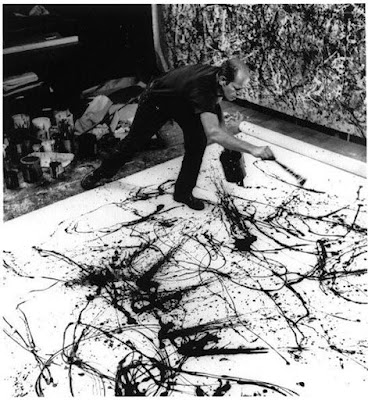W.J. PHILLIPS TOP TWENTY COUNTDOWN
W.J. Phillips woodblock prints have always been popular with Masters Gallery and friends. Phillips is doubtless Canada’s artist who was most proficient at woodblock printmaking. His skillfully executed oeuvre of woodblock prints are an excellent choice for anyone wanting to collect Canadian art, as they were made in editions ranging from 5 to 150 of each. Multiple editions of each work of art makes availability greater and thus prospect of amassing the particular images one wants (or all of them) becomes a real possibility. Don’t be fooled into thinking that this means Phillips woodblock prints are not original art. The making of each woodblock print is done completely hands-on by the artist (just as much so as an oil painting) and is both difficult and laborious. These prints resemble nothing of the type produced in very large editions, or unlimited editions, with en mass technological printing processes. To prove this point further, note that because each edition is individually pulled from the woodblocks by the artist, none are identical. Each impression will vary in colour and clarity as seen by two editions of Morning below.
Two different editions of Phillips' Morning, edition of 150, 1924
Because collecting Phillips’ woodblock prints is actually feasible, many people become very enthusiastic about which ones they would like and what they want to acquire next. Some collectors choose to stick to prints of a specific location, such as Lake of the Woods, The Rockies or the West Coast. Other collectors choose to have their collections represent a variety, or selection of everything Phillips did.
Most collectors might consider a select few works more desirable to collect than others, as they can be singled out as his masterpieces. Phillips fans could probably agree quite closely as to which would comprise the artist’s top five woodblock prints. The top five are in fact so desirable that there can often be waiting lists of prospective buyers interested in acquiring the next edition that comes available for private sale. Naturally, this also means that when the top works come available at auction there are always bidding wars and prices are therefore significantly higher in price than Phillips’ other works. This does not mean that Phillips other woodblock prints are not also attractive; Phillips was a very talented artist after all.
Phillips executed nearly 150 colour woodblock prints over the course of his career, most of which are exceptional works of art. So after the top five, what do collectors desire next? There is a wide range in price having to do with various factors like size, subject matter/ location, level of detail, edition clarity, and so forth.
Masters Gallery buys and sells Phillips work with great regularity, and is thus familiar with which works are typically encountered, requested and favoured most. We decided to make a list of the Phillips’ woodblock prints that are cherished by collectors beyond the top five obvious examples. We came up with our top twenty list, with a specific order for the top ten and no specific order for the remaining ten (personal opinion and taste make this subjective) I for one found it difficult to narrow down a list of my favourites, having at least another dozen prints that could easily usurp others in the top twenty.
After compiling our list of what we thought ought to constitute Phillips’ top twenty woodblock prints, we decided to see how close we were to a more definitive list. By looking at the top prices for Phillips’ prints through online databases for auction price records. Interestingly, our list was close to the order of official sales prices at auction for the top ten. It is worth mentioning that Phillips’ woodblock prints have always sold often through private sale in retail art galleries across the country as well, and therefore the auction sales results are not completely gospel. Everyone’s list will vary a little bit. Have a go at compiling your own top ten or twenty, we would love to hear your opinions (jillturner@shaw.ca) If you need help remembering all the prints you can visit a website devoted to his complete graphic works here to refresh your memory of all the prints.
Here is our top ten:
1. Karlukwees, edition of 100, 1929
2. York Boats, edition of 150, 1930
3. Summer Idyll, edition of 100, 1926
4. Mamalilicoola, edition of 100, 1928
5. Jim King’s Wharf, edition of 100, 1927
6. Norman Bay, Lake of the Woods, 1920, edition of 50
7. Indian Days, Banff, edition of 100, 1950
8. Gloaming, edition of 50, 1921
9. Hnausa, edition of 100, 1934
10. Temple Lodge, edition of 100, 1943
And our remaining top eleven through twenty:
Jack Pine, Lake Lilies, Howe Sound, Mount Torrent, Sharp’s Dock, Flying Island, Bather No. 2, Duck Hunter, West Road (Mountain Road) and Poplar Bay.
For interests sake here are the top ten by selling price:
1. Karlukwees
2. Mamalilicoola
3. Summer Idyll
4. York Boats
5. Jim King’s Wharf
6. Indian Days, Banff
7. West Road (Mountain Road, edition of 100, 1942
8. Sharp’s Dock, Pender Harbour, edition of 100, 1952
9. Gloaming
10. Howe Sound, edition of 100, 1935
Here are image of the top ten
Karlukwees 1929
York Boats 1930
Summer Idyll 1926
Mamalilicoola 1928
Jim King's Wharf 1927
Norman Bay, Lake of the Woods 1920
Indian Days, Banff 1950
Gloaming 1921

Hnausa 1934
Temple Lodge 1943
West Road (Mountain Road)1942 (auction top ten, our top twenty)
Sharp's Dock, Pender Harbour 1952 (auction top ten, our top twenty)
Howe Sound 1935 (auction top ten, our top twenty)
Don't forget to send us your list to jillturner@shaw.ca or peterohler@shawcable.com Hope you enjoyed the blog.
BY: JILL TURNER (with enthusiastic input by Peter Ohler)

































